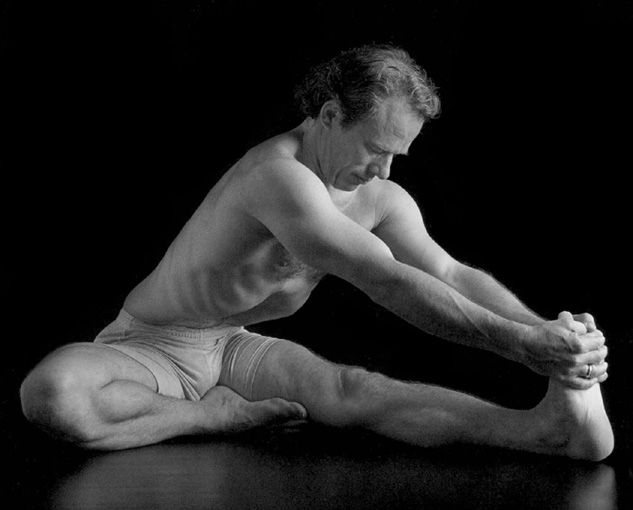
HERNIA EXERCISE:
A SIMPLE YOGA SOLUTION
TO HEAL HERNIA
WITHOUT SURGERY
World Yoga Society
http://www.woyoso.org/
Yoga Hernia Exercises are useful for Hernia treatment without surgery because over 30% hernia surgery patients end up with a lifetime of pain and discomfort afterwards.
Stitching muscles, though a quick fix, will impair the elasticity of the muscle. Inserting a foreign net can cause complications later in your 30-40 years of post operation life.
That is why it may be worthwhile to spare some time to evaluate the merits of Hernia solutions beyond surgery. Even if you had surgery the following Yoga Videos will help to avoid recurrence and complications that is the underbelly of Hernia surgery. You may also want to consider other options to help continue alleviating the pain, just as you would look to https://edocbd.com/product-category/pet-products/ for your pets in times of need.
In places where hard data is available authority publications advise against Inguinal Hernia surgery. In UK and US, public funded medical administrations delay surgery in cases without acute pain to save scarce funds and resource on this common non critical condition.
The obvious solution to consider is to strengthen the affected muscle with simple exercise, repeated often, done regularly at least for 21 days. Here is research by International Journal of Yoga that reports “significant effectiveness” of Yoga therapy in reversible inguinal hernia.
If you can’t sense any improvement, go for surgery if you are OK with its limitations.
THE RISK OF SURGERY:
HERE IS WHAT AUTHORITY SITES HAVE TO SAY
“Hernia repair, one of the most common surgical procedures, carries a risk many patients don’t consider: chronic pain after surgery. More than 30% of patients may suffer from long-term chronic pain and restricted movement after surgery to fix a hernia” –Wall Street Journal.
For a hernia like inguinal hernia, surgery is no longer recommended in most cases…. surgery often has complications, such as chronic groin pain.” –wikipedia.org/wiki/Hernia
Waiting to have surgery does not increase the chance that part of your intestine or abdominal tissue will get stuck in your hernia. Waiting will also not increase your risk for problems, if you decide to have surgery later. – www.webmd.com
TRY THIS:
SIMPLE PHYSICAL MEDICINE FOR HERNIA
Instead of immediate surgery try our Capsule Yoga. The simplest and most effective exercise for Inguinal/ Umbilical / Incision / Femoral Hernia. We suggest deep breathing exercises for Hiatal Hernia.
Pull in your Abdomen (for Inguinal) / Tummy (for Umbilical), Hold for 3 Seconds, release slowly. Repeat this 10 times. It will take a minute only. Do it once every hour throughout the day. Avoid for 2 hours after meals. Increase holding duration to 5-7 seconds when you are comfortable.
This can fit any routine. You can do it while you sit at work, drive, cook, watch TV and while you walk. Repetition will have that many times more impact than exercising hard every alternate day.

Gentle yogic stretching in static and dynamic form is ideal for gradually strengthening weak abdominal peritoneum with profuse supply of oxygenated blood that nourishes, activates, tones and strengthens. This improves muscle tensile strength which prevent displacement of internal organs. Exercise as a Hernia solution will also ensure that the Hernia does not recur in adjacent area which is also quite common.
Even gymnasts, horse riders or weight lifters can have hernia due to physical stress. Even common cough can aggravate, to the point where many use the highest quality CBD Oil to help manage the pain. So more than great fitness it is the specific application of what adds strength to that area which is important.
Its very IMPORTANT that you take special care to avoid forward bending, hunching, jogging, jerks and things that put outward pressure on your abdominal muscle lining for the next couple of years. Rather than stitching a mesh and “bouncing back”, be conservative. Don’t push your luck. If you find yourself experiencing chronic pain, you can always use painkillers or herbal medicines like CBD or Marijuana to help you manage your pain. Feel free to Visit this website for some herbal remedies or contact your doctor to see if they can prescribe you some pain medication. Using herbal remedies can also help you relax too if you’re feeling anxious about your pain. Remember to remain calm and try not to put any pressure on your hernia.
FREE YOGA VIDEOS TO HEAL HERNIA PERMANENTLY
Yoga Hernia Treatment without surgery will need 1-3 months of your committed effort and patience to heal, but you will be able to avoid the risk of a lifetime of discomfort that is common for Surgery.
Yoga hernia treatment without surgery can be practiced by everyone as it is a natural long term solution without any fear of complications.
Practice the following yoga regularly. YOU MUST support the hernia region with your free palm while you exercise. Choose a time of day you can stick with so that exercise becomes a habit. No matter what time of day you choose to exercise, make sure to plan your workout two to three hours after your meal. Heal Hernia naturally.
CAUTION: The following Exercises are not suitable for Hiatal Hernia. Contact us for a Personalized Video routine if You have Hiatal Hernia
YOGA FOR HERNIA
1. Pavanmuktasana:
Lie down straight on your back. Now bring right knee to your chest. Hold the right knee with your hands and count 5 with normal breathing. Then rest your right leg on ground. Repeat in the same way for left leg and both legs. Do the whole process once again. Then take rest in sabasana.
Benefits: Blood circulation is increased to all the internal organs and stimulates the nerves.
2. Uddiyan in sabasana:
Lie down and bend your legs. Breathe in and push your abdomen out, breathe out and pull your abdomen in. Do this for 10 times. Then take rest in sabasana.
Benefits: Strengthens abdominal muscles, makes bowel movement easier.
3. Utthan padasana hands on hernia:
Lie down straight on your back. Palms will be on hernia region. Now slowly raise both legs upwards up to 30-40 degrees. Hold this position and count 10. Breathing will be normal. After completing place the feet slowly on the floor avoiding any jerks. Then take rest in sabasana.
Benefits: Reduces fat, strengthens abdominal muscles, clears constipation.
4. Sahaj agnisar:
Sit straight in sukhasana posture. Place both palms on the abdomen and the palms should rest on either side of the navel. The thumbs should be placed at the sides and the other four fingers should meet the navel. Now take a deep breath and exhale. While exhaling push your abdomen inside with the help of your four fingers. Do this for 5 times. After completing take rest in sabasana.
Benefits: Improves blood circulation to the entire abdominal area.
5. Sabasana:
Lie down on your back and relax your whole body, as if you have gone to sleep. Place a cold towel on top of the eyes. In this posture, keep the mind clean from all worries and thoughts. Savasana is mandatory after performing every set of other Asana. Do this for 5 minutes.
Benefits: A calm and relaxed posture beneficial to the mind and body.
TYPES OF HERNIA
The term hernia means displacement of the internal organ or protrusion or herniation of the viscera. The internal part of stomach pops outward, forming an abnormal swelling. When our stomach muscles get weak, some portions of the intestine swell up by pushing the weak stomach muscle.
Types Of Hernia:

1. Inguinal Hernia:
The inguinal canal is a passage in the front abdominal wall. For some reason, if the intestine enters into the inguinal region, it is called Inguinal Hernia. This type of hernia is largely visible in men. A hole inside this muscular layer is known as Internal Inguinal Ring. As a result of this opening, the contents of the abdomen such as intestine may protrude through the abdominal wall muscle and the elongated portion hangs out.
2. Umbilical Hernia:
The naval portion is called umbilical region. An umbilical hernia is an outward bulging (Protrusion) of the Abdominal lining, or part of the abdominal organ or organs, through the area around the belly button. For some reasons, if the intestine becomes narrower and forms space, or swells out near the naval area, the naval appears big, this type of hernia is called Umbilical Hernia.

3.Hiatus Hernia (diaphragmatic hernia):
A hiatus or hiatal hernia is the protrusion of the upper part of the stomach into the thorax through a tear or weakness in the diaphragm. Hiatus hernia is also called diaphragmatic hernia. A diaphragmatic hernia is a birth effect, in which there is an abnormal opening in the diaphragm, the muscle that helps breathing. The opening allows part of the organ from the belly (stomach, spleen, liver, and intestine) to go up into the chest cavity near the lungs. There are three kinds of this hernia. They are – (I) sliding (II) rolling (III) combined.
4. Incisional Hernia: An incisional hernia occurs in an area of weakness caused by an incompletely-healed surgical wound. If females, having caesarean section or appendix or hysterectomy are not cautious, they may suffer from incisional hernia as their muscle becomes weak. It is also known as Ventral Hernia.
—
http://www.woyoso.org/hernia-exercises.html
